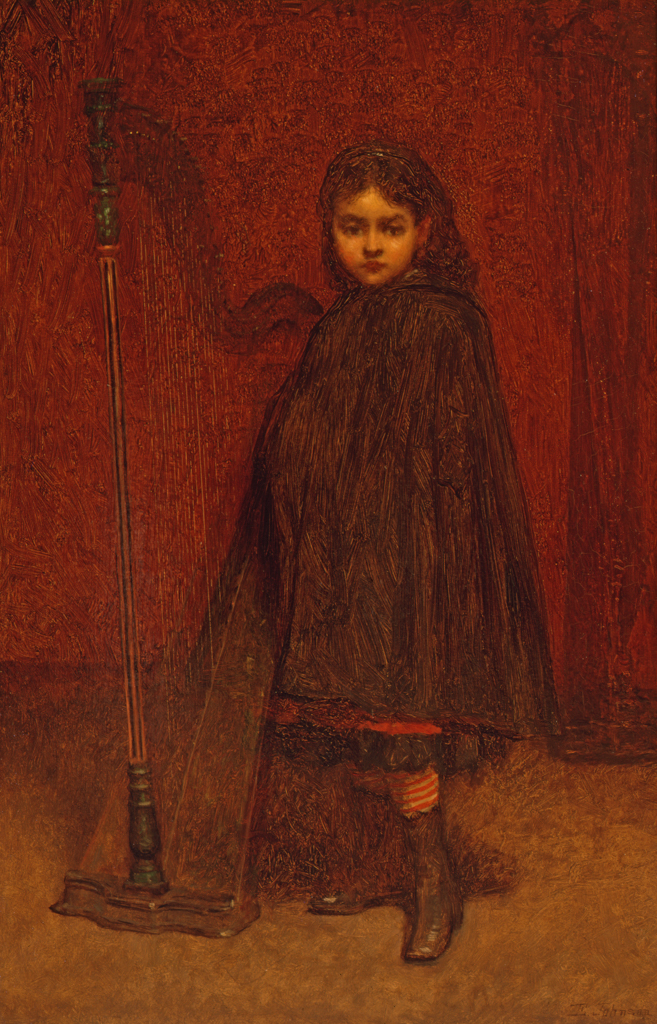Little Harpist

Eastman Johnson, Little Harpist, ca. 1870-1872, oil on board, Bequest of Miss Mary Forbush Failing, public domain, 48.1.11
This work is not currently on view.
- Title
Little Harpist
- Related Titles
original language: The Little Harpist
- Artist
- Date
ca. 1870-1872
- Medium
oil on board
- Dimensions (H x W x D)
19 1/2 in x 12 1/8 in
- Inscriptions & Markings
signature: E Johnson, brushed, lower right
- Collection Area
American Art
- Category
Paintings
- Object Type
painting
- Culture
American
- Credit Line
Bequest of Miss Mary Forbush Failing
- Accession Number
48.1.11
- Copyright
public domain
- Terms
From the middle of the 19th century, many American artists trained in France and produced light, bright Barbizon-inspired works, primarily landscapes. In 1849, however, Eastman Johnson moved to Germany to study at the Düsseldorf Akademie, which emphasized a darker palette and more realistic style. He went on to study in Holland, where he was greatly influenced by the composition, naturalism, and deep colors of 17th-century Dutch painting.
Genre scenes—images of everyday life—became extremely popular in the mid-19th century. They were generally highly detailed and celebrated classic American "types," trades, and domestic scenes. Like 17th-century Dutch paintings, they contained symbols for the viewer to decode in order to understand the underlying moral or theme. Johnson recognized the demand for this type of work and developed a format that combined portraits and genre settings. This painting is part of a series of interiors with young women and girls painted in the 1870s.
- Exhibitions
1998 The Other Nineteenth Century Portland Art Museum









